Henry Every's career was not very long. According to most legends, he practiced the craft from 1694 to 1695. Despite the short period of "work", Every is considered one of the greatest pirates in history. Why? The answer is simple. He committed the greatest robbery in the history of piracy.
The Isabella Stewart Gardner Museum robbery takes the top spot on the list of the most profitable thefts in the history of the world. It is estimated that the value of works of art looted in 1990 was approximately $ 500 million.
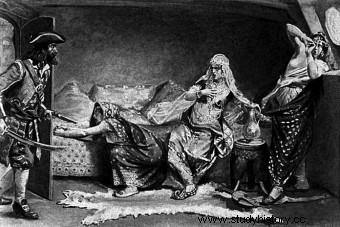
Despite the short "work" experience, Every is considered one of the greatest pirates in history.
The Boston robbery in the context of the actions of a 17th-century pirate is worth mentioning for two reasons. First, it allows us to visualize how a huge treasure was stolen by Every. It is estimated that the cargo looted from the Indian ship Ganj-i-Sawai today would be worth around $ 400 million. Secondly, Henry Every - like the Boston robbers - has never been caught.
A pirate is born
In 1694, the so-called the Nine Years' War (the war of France with the coalition of the countries associated in the Augsburg League). At sea, French units were to be hunted by, among others two ships flying the Spanish flag - Charles II and James.
In May 1694, however, there was a rebellion on their decks. The reason for the rebellion was that instead of looting and looting the French fleet, the ships stood idle in port in La Coruna. The rebels took control of Charles II and decided to look for loot on their own. They were headed by Henry "Long Ben" Every. This is where his pirate career began.
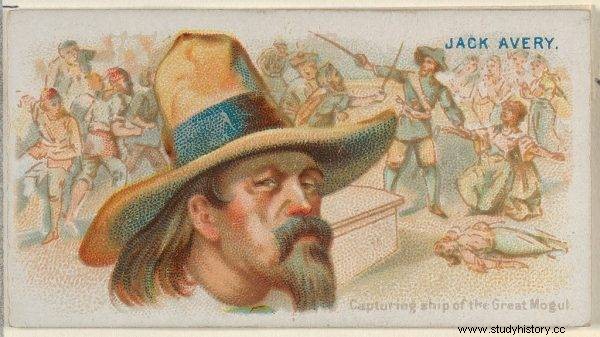
The rebels took control of Charles II and decided to look for loot on their own. They were headed by Henry "Long Ben" Every.
The base from which Every set off on pirate escapades was St. Maria (today known as Nosa Borah). In the 17th century, this place was to Indian Ocean pirates what Tortuga and Port Royal were to Caribbean pirates.
Every to St. Mary arrived in 1695. His ship (Charles II) was renamed Fancy and - along with the rest of the pirate brothers - began to prowl the surrounding waters. The Bab el Mandeb Strait (Gate of Tears), connecting the Red Sea with the Indian Ocean, was particularly important for robber's undertakings. In August 1695 it was this way that the enormous fleet of 25 ships sailed. They were mostly Indian merchants and pilgrims who were returning from the religious celebrations taking place in Mecca. Among all these ships, one unit was of particular interest to pirates.
Floating Treasure
Ganj-i-Sawai (Immense Treasure) was the pride of the Indian Emperor Aurangzeb's fleet. This huge ship was called Gunsway by pirates. Colossus armed with 62 guns, took about 600 passengers and 500 soldiers on board (for comparison, Fancy only had 46 guns and a crew of 150).
As if that were not enough, Ganj-i-Sawai always swam with bodyguards. Its guardian was the imperial warship Fateh Mohammed. Every was well aware that attacking the ships alone was not an option . Therefore he assembled his own pirate fleet that was supposed to hit Indian units. In addition to Fancy, it consisted of five more pirate ships:Pearl, Portsmouth Adventure, Dolphin, Amity, and Susannah. On August 15, 1695, under the cover of night, Indian ships managed to escape from the ambush. It wasn't until the early morning that the pirates realized that they had been outsmarted and immediately gave chase. When they caught up with their victims after five days, the first fights broke out.
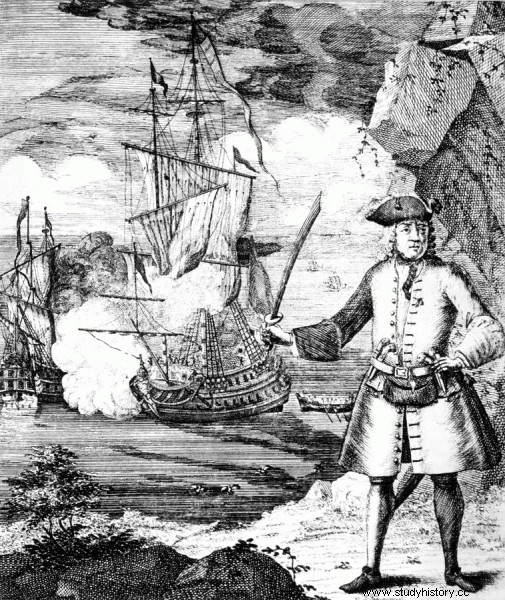
Every to St. Mary arrived in 1695. His ship (Charles II) was renamed Fancy
Commanded by Thomas Tew, Amita's ship lost to Fateh Mohammed, and its entire crew was captured. Every and co managed to retake their pirate brothers. Fateh Mohammed was defeated and completely looted. And there was something to loot. The gold and silver in the ship's hold would be worth approximately $ 12 million today. For the pirates, however, it was an appetizer. The main course was to be Ganj-i-Sawai.
Jewels of India
A good captain of a pirate ship, apart from a fast and maneuverable unit, dedicated crew and great sailing knowledge, should have one more important thing. Luck. Henry Every had them.
During the first salvo fired from the Indian ship, one of its cannons exploded and shrapnel decimated the crew. In turn, the first cannonade fired from the Fancy guns mowed the main mast of Ganj-i-Sawai and completely immobilized the ship . The fight lasted for three hours, but every minute the pirates gained the upper hand and finally triumphed. The plundering has started.
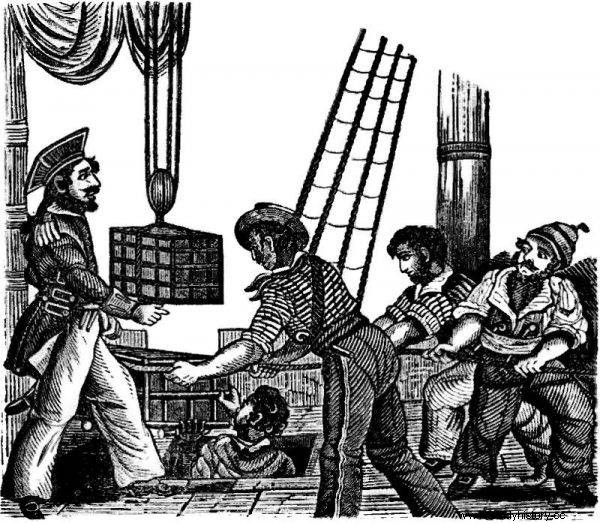
The cargo hold of the ship was filled with gold bars and chests full of precious stones.
The cargo hold of the ship was filled with gold bars and chests full of precious stones. Every on board the Ganj-i-Sawai, however, found another treasure of particular beauty. Imperial granddaughter. Legend has it that Every fell in love with her at first sight and took her for his wife. However, this is not true. He was supposed to say:"Just like a real pirate, I assured the princess that I prefer jewels more than women."
Contrary to popular belief, there is also no evidence that the crew were slaughtered and Indian women were gang raped on board the Ganj-i-Sawai . Yes, there were individual cases of this type of barbarism, but for pirates the most important thing was to loot the ship and move away as quickly as possible.
Wanted dead or alive
When Emperor Aurangzeb estimated the value of goods stolen from Ganj-i-Sawai, he estimated that it was about 600,000. pounds (which today would be around $ 400 million). Every and his crew have become the wealthiest pirates in history.
Another achievement can be added to the list of Every's successes. He was probably the first man to be issued an international arrest warrant. When information about the attack on pilgrims reached India, the emperor was furious. As he believed that every marauding pirate was English, his anger fell on the only English he had at the time - the British East India Company.
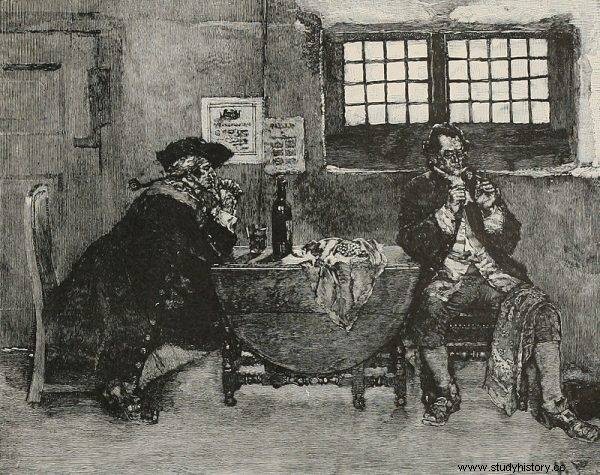
Every and his crew have become the wealthiest pirates in history.
An army was sent to its headquarters in Bombay, and the people there were arrested. Worst of all, the Company was banned from doing any trade in India. Only after financial compensation, capture and execution of the pirates, the restrictions were to be lifted. Even the British government was very much concerned about the troubles of the Company. He sharply condemned the attack on Indian ships and issued an arrest warrant for the corsairs. A reward of £ 5,000 was offered to capture them.
The King of Pirates
After the loot was split, the pirates scattered all over the world. One group of daredevils even decided to return to England, but - as it turned out later - it was a bad idea. Soon they were captured and hanged.
These six pirates are the only crew members to be punished for the pirate robbery of the century. The fate of Every's himself is mysterious. According to some legends, he returned to his hometown of Devon. He was to lead a rowdy lifestyle there, lose all his fortune and die in poverty . Others claim that he went to Ireland and lived the quiet life of a landlord under an assumed name of Benjamin Bridgeman.
Regardless of whether Every returned to Europe or holed up elsewhere, he has become a true legend. His greatest success, however, was not the fortune he had stolen, but the decision to withdraw from the pirate business before someone hangs him on the gallows.
